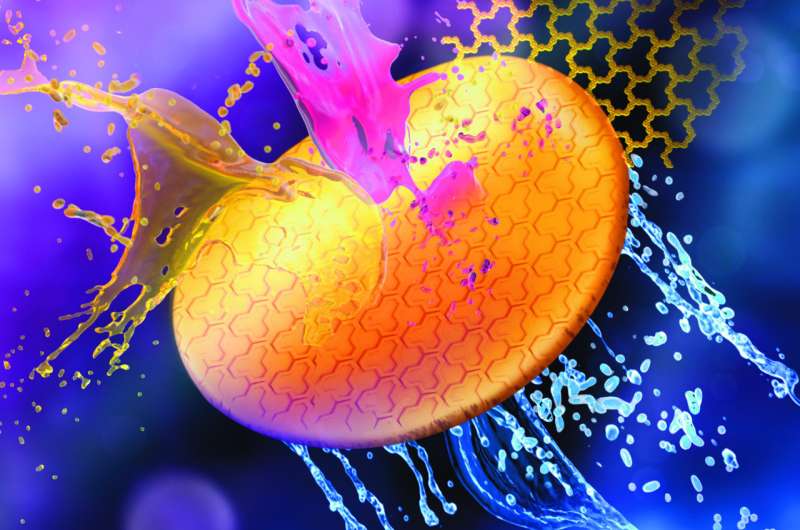
The figure shows the wetting process of a dual-faced covalent organic framework (COF) membrane made by microwave-mediated interfacial polymerization. The membrane exhibits superhydrophilic and near-hydrophobic properties, enabling high water filtration capacity. Credit: NYU Abu Dhabi
A team of researchers at NYU Abu Dhabi (NYUAD) has developed a new method that uses microwave technology to easily assemble and prepare a new type of membrane that cleans water from many pollutants.
Membrane synthesis technology takes a few minutes, making it one of the fastest ways to create covalent organic framework (COF) membranes. These membranes act as filters in devices designed to clean polluted water of certain pollutants, allowing it to be reused in a variety of ways—an important breakthrough in the era of water purification. waste which is important in a world threatened by water scarcity.
A new type of membrane with two faces, characterized by special areas of superhydrophilic and close to hydrophobic, enables the effective removal of impurities such as oil and dye from water. This double process not only improves the filtration performance, but also gives the membrane strong antibacterial properties, which are important for long-term use and success.
Published in Journal of the American Chemical SocietyThe study entitled “Tunable Wettability of a Dual-Faced CoF Membrane for Enhanced Water Filtration” presents this new method developed by Farah Benyettou and Asmaa Jrad under the leadership of Ali Trabolsi, Professor of Chemistry and Co-Principal Investigator at NYUAD Water Research. Center. The team’s method includes a one-step microwave-mediated synthesis that occurs at the interface of water vapor, which allows precise control over the membrane properties without the need for subsequent modifications.
“By fine-tuning the reaction time, we can change the thickness of the membrane and its hydrophilic and hydrophobic properties,” explains Benyettou.
“This ability allows us to tailor the membrane specifically for different types of water waste, which improves the efficiency and speed of water purification,” explained Jrad.
The COF membranes developed by the NYU Abu Dhabi team show high oil removal performance in oil-in-water mixtures and boast exceptional water permeability due to the structure of They are multi-layered and have consistent porosity. Additionally, these membranes outperform traditional polymeric membranes in resisting biological contamination, a common challenge in membrane-based water filtration systems.
This technology represents a major advance in the synthesis of high-quality, crystalline and passive COF membranes.
“Our method not only simplifies the production process but also improves the separation efficiency of the membranes, providing a promising solution to important water purification problems worldwide,” Trabolsi added.
Additional information:
Farah Benyettou et al, on Wettability of Bifacial Composite Membranes for Enhanced Water Treatment, Journal of the American Chemical Society (2024). DOI: 10.1021/jacs.4c07559
Offered by New York University
Excerpt: New membrane technology could lead to more efficient and effective water treatment systems (2024, August 8) retrieved on August 8, 2024 from https://phys.org/news/2024 -08-membrane-technology-effective-efficient-purification.html
This document is subject to copyright. Except for any legitimate activity for the purpose of private study or research, no part may be reproduced without written permission. Content is provided for informational purposes only.
#membrane #technology #lead #efficient #effective #water #treatment #systems